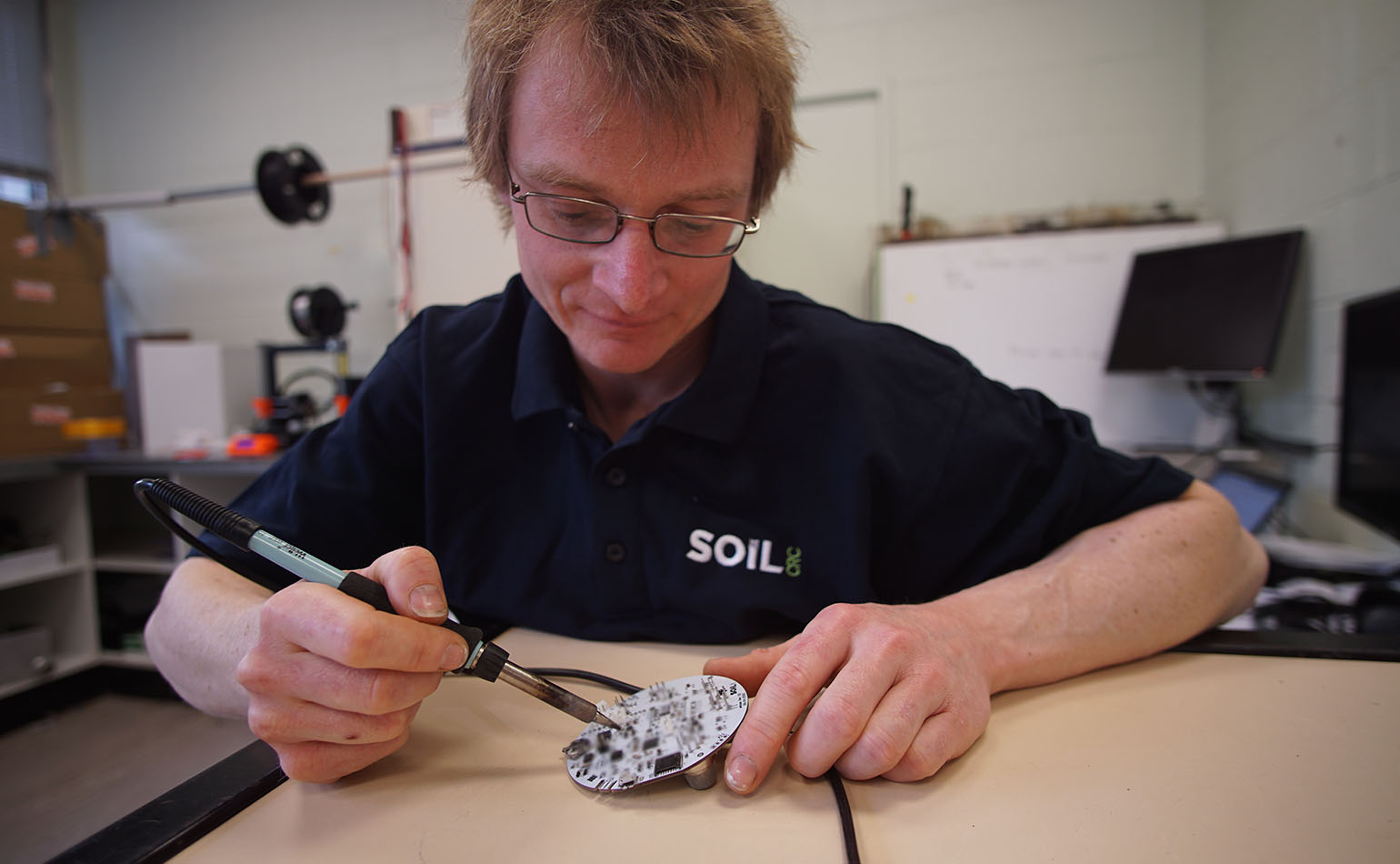Research scientist, Dr Robert Hardy (University of Tasmania) working on a component of the eNose
Project: Smelling soil
Project Leader: Dr Shane Powell, University of Tasmania
Farmers often intuitively assess soil by smell. There is strong evidence that the fingerprint of gases emitted from soil can identify the composition and activity of the microbial community which relates to soil health. Currently there are no field based sensors to diagnose soil health using aromas and there are very few rapid and cost effective in-field techniques available to assess and monitor the health of soil microbial communities. An ‘electronic nose’ potentially offers a solution to this problem.
The project is building an electronic nose that can ‘smell’ the gasses and odours emitted by soils. Because different soil microbes emit different gases or combination of gases, the project team are hoping that by monitoring soil gases they will get a better understanding of what the different groups of microbes are doing, and whether soil conditions favour ‘good’ or ‘bad’ microbes. This information can be used by growers to help make decisions about how to best manage their soil.
The soil eNose could potentially be used as a stand-alone tool, complete with other soil (temperature, pH, and moisture) sensors, or integrated into more complex precision agriculture systems including components which are under development by the Soil CRC.
The eNose design mimics biochemical processes meaning the exact compounds being emitted do not need to be identified. The project team aims to use the signature of these compounds as a proxy for health and function of the soil. Some of the sensors however will act in a traditional capacity, e.g. the eNose will have a carbon dioxide sensor (carbon dioxide flux is commonly used as a measure of soil respiration, it is known that high respiration rates are associated with healthy and productive soils).
Project Update
There have been two main areas of activity; prototyping different eNoses, and meeting with growers to get their ideas on how they would potentially use them. This process involves numerous rounds of designing, building, testing and then repeating again to improve the performance of the device.
The project team are at the stage of starting a large laboratory trial with pots of soil to see how different soils ‘smell’ different as we dry soils from saturation.
They have conducted workshops and attended field days with FarmLink, Soils for Life and Southern Farming Systems. At these workshops they informed growers about the project and gained their input to find out what growers want to know about their soil and how they might use an eNose. These days were very beneficial for the project.
Unfortunately, in recent months, COVID has limited the team’s ability to take the eNoses to growers personally so they are investigating ways to field test in the future.
Preliminary testing indicates that the eNose does measure changes in the gases produced by the soil as it dries. The team are looking forward to sharing their results soon.
Participants
University of Tasmania
Birchip Cropping Group
FarmLink
Southern Farming Systems
Soils for Life

